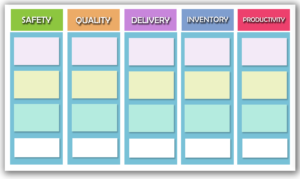There are many methodologies and techniques that can be used for handling manufacturing companies. One methodology that fits well with manufacturing (as well as any other business) is Six Sigma.

A Deeper Understanding of Six Sigma
Six Sigma is usually termed for a process that is well-controlled. It is a methodology that has set tools and processes. These tools and processes are used to improve the overall performance of an organization or business.
The increase in the business’ performance coupled with the lessened changing of processes can lead to increased profits, the decrease of product defects, an increase in employee morale, and even the improvement of your product or service’s quality.
For manufacturing, one important methodology that Six Sigma can bring to the table is Total Productive Maintenance (TPM).
In maintenance work, the business is only as good as the tools used. With every use of every tool, it begins to wear and tear. A successful maintenance business should be able to foresee when certain tools need to be repaired.
While we are presenting this for maintenance work, these principles and methodologies can be used for other professions as well.
In this article, we’ll cover the following topics:
People can understand Six Sigma better if they understand its philosophies, methodology, and tools used. A foundation of understanding can help out in using other methodologies and tools from Six Sigma.
Philosophy and Methodology of Six Sigma
Six Sigma has a certain philosophy that guides it’s actions and implementations. The philosophy is that Six Sigma views all processes as definable, measurable, analyzed, improved, and ultimately controlled.
Since the goal of Six Sigma is improvement, it is important to discover certain aspects of a process. People must understand the ins and outs of specific tasks and processes.
It must also be possible to analyze and measure certain aspects of the process. The data taken from these two steps is the compass that people use to direct their actions. In Six Sigma though, there is only one direction. That direction is up (for improvement).
Finally, using the data, the process should be improved upon and controlled. Control is important as an uncontrollable process means that things cannot be tweaked or fixed for improvement.
These actions we have just described speak to the methodology of Six Sigma. This base methodology is called the DMAIC. It means “Define, Measure, Analyze, Improve and Control”.
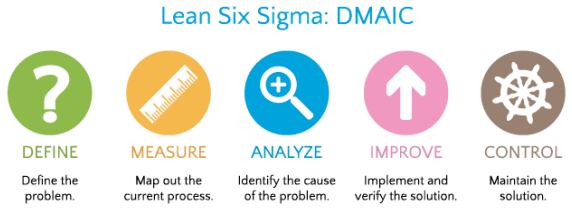
The DMAIC methodology is what practitioners are expected to do. It starts with defining a problem and ending with a plan on how to solve the problem or improve matters. These solutions should improve things for the long-term.
Tools Used
As mentioned, Six Sigma sees processes as analyzable and measurable. These can be done via quantitative or qualitative methods. The tools used are important, as they help to drive the process towards improvement.
Some tools include, but are not limited to control charts, statistical process control (SPC), process mapping and more.
A control chart is used to study how a process either improves or deteriorates over time. The data is presented via a graph. The chart has three lines on it. The line at the center shows the average, the upper line the control limit, and the lower line for the lower control limit.
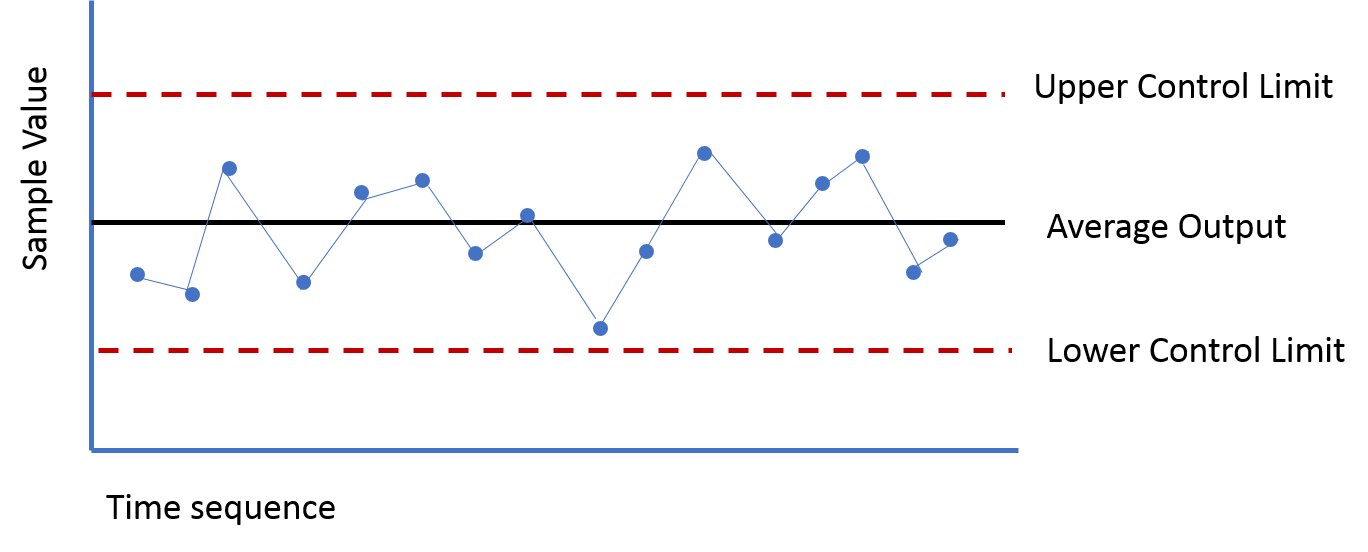
All the data plotted is taken from historical data. The data from the lines will be able to show you if output is consistent or if it is all over the place.
A control chart is usually used to control and correct ongoing processes. It is also used to predict certain outcomes from a process.
The SPC is a process that helps control certain processes. The aforementioned control chart is one of the most popular tools used in the SPC.

The SPC is usually used to analyze certain processes, discover any issues that may occur, and find solutions for production issues.
Finally comes the process map. The process map was created in response to the way certain businesses work. Even today, businesses consist of several teams that have varying output. Usually, the output from one team is separate from that of another.
The process map sees the intersect between these outputs. In the map, the various processes, outputs, and their effects are mapped. This may reveal certain problems within the organization that were previously hidden.
Explaining TPM
Now let’s move on to another methodology that can be used under the Six Sigma umbrella. It is the TPM methodology.
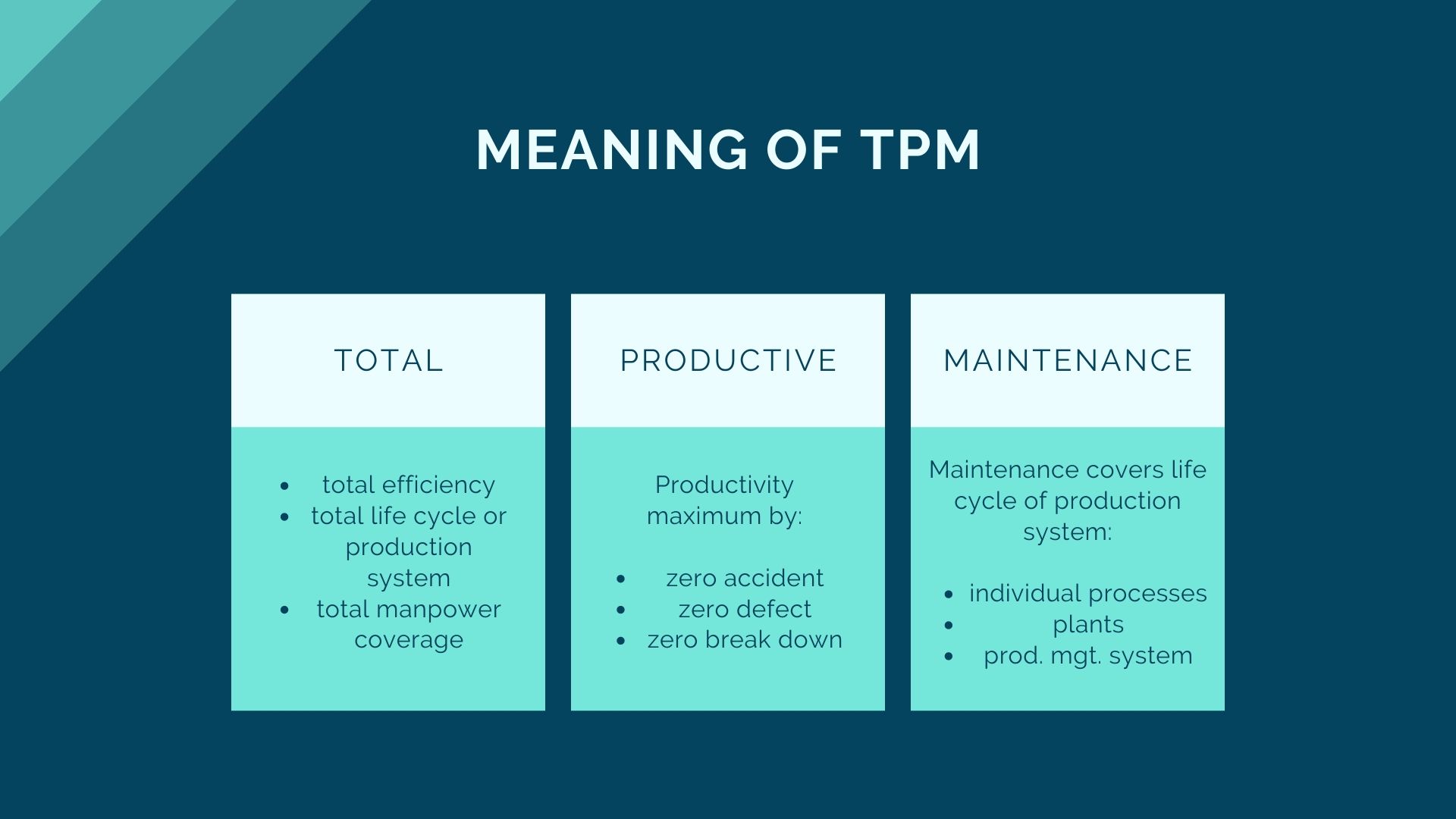
TPM is a method that allows for users to utilize various machines, people, processes, and equipment to improve processes, production quality, and quality systems.
The main goal of TPM is to fit pieces of equipment into business processes. In certain cases, equipment gives the business value. Without the equipment, the value of the business is lost.
Thus, we can see that the true goal of TPM is to foresee certain unplanned downtimes and decrease or eliminate them altogether.
The TPM process is split up into various steps. Let’s have a walkthrough of these steps.
Discovering the Current State
Much like a Gemba Walk used in the Gemba-Kaizen method, the whole process starts with understanding. The first step should always be to seek and understand the business and environment and processes that are taking place.
Begin by going around the area of your business. Discover and examine the various pieces of equipment used, the associated processes, and how maintenance is handled.
Speak to the various operators and are owners. They will be able to lend insight on a systems view of the organization in terms of how well the maintenance is carried out. Afterwards, use a progress benchmark to see how far the improvements have progressed.
These two pieces of data will help to guide users on the scope and priorities of the TPM.
Create a Steer Committee to Take Responsibility of the TPM
One important aspect of TPM is that it is effectively used with a bottom-top approach. Even without the help of management, it should still work fine.
Each team must set goals and a maintenance vision for the processes they are responsible for. They must also identify the measures taken that will help the maintenance implementation and sustainability.
Tag Critical Equipment
The TPM could fail if the scope of it is too big. If the scope is large, then the resources required to address them may not be enough.
When all the data is gathered, a good practice is to apply a scoring or matrix system to each piece of equipment.
The different teams will vie for each of their pieces of equipment to be the most critical. Without the scoring system, the scope includes all of the equipment.
The scoring system will then allow the whole organization to understand the critical pieces of equipment and what the priorities are when the time comes.
Note the Conditions of Critical Equipment
Now you begin planning for any future maintenance. With all the various machines as well as their parts are categorized and rated, users should also categorize the conditions they are in.
This will ultimately help in planning out when maintenance measures should take place. This not only helps with maintenance schedules, it also maps out when parts are procured, when certain equipment needs to be upgraded, and more.
With the right planning, this could save the business a lot of money.
Measure Maintenance Skills
The next step is ensuring that when maintenance takes place that the right people are on hand to carry it out. It is essentially a skills gap analysis.
If there are any maintaining skills that need to be taught or enhanced, this is the right phase to do it in.
Implementation, Assessment, Improvement
The final phase is the implementation phase. This is built upon the pillars of TPM. These pillars are:
- Focused Improvement
- Administrative & Office TPM
- Autonomous Maintenance
- Planned Maintenance
- Quality Management
- Education and Training
- Early/Equipment management
- Safety Health Environment
The goal of these pillars is to create a culture of being proactive when it comes to repairing machines. It also sets some tactics as to ensuring that the equipment remains reliable when in use.
Upholding these pillars, a plan is created for the various team members and even the whole organization. In addition, the maintenance team will understand how to maintain the equipment.
Quality Control in Six Sigma
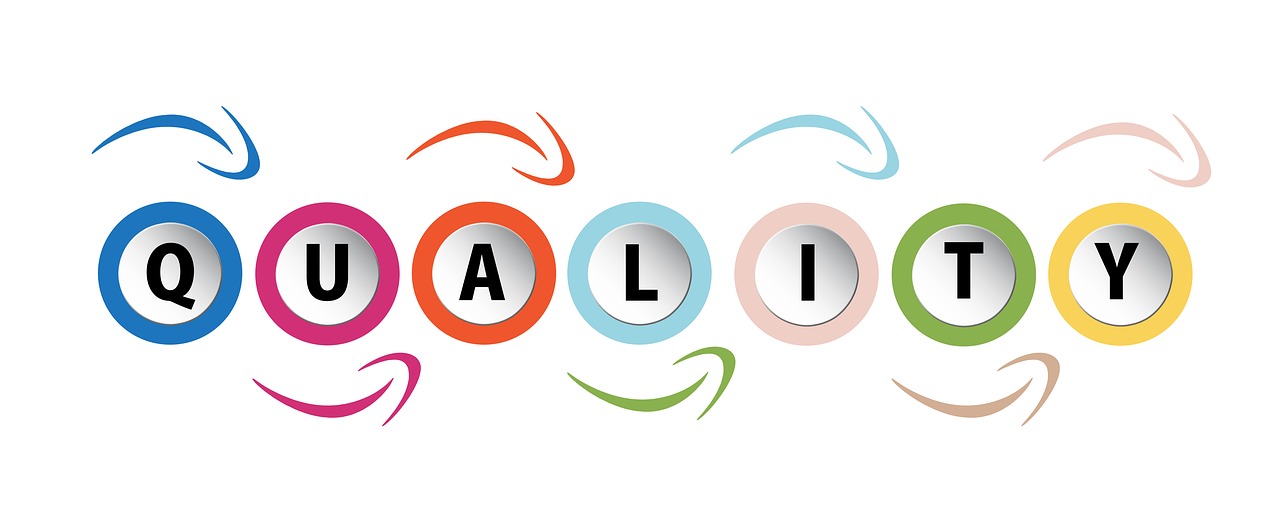
Quality should be the backbone of every business or organization that offers products or services. However, no matter how many checks are put in place, there is always a risk of quality problems slipping through the cracks.
This is where Quality Control or QC comes into play. QC is defined as the process of controlling operational techniques or activities that are used to fulfil the requirements of quality.
It is comprised of various processes that ensure that aimst to measure and ensure the quality of certain products or services.
If the QC is well-done and applied consistently, that means that the product or service will come out with the acceptable level of quality. Once it reaches that level, it is best to have no variance at all.
Everything we have discussed so far – the Six Sigma DMAIC methodology and the TPM methodology – are both good ways of carrying out quality control.

